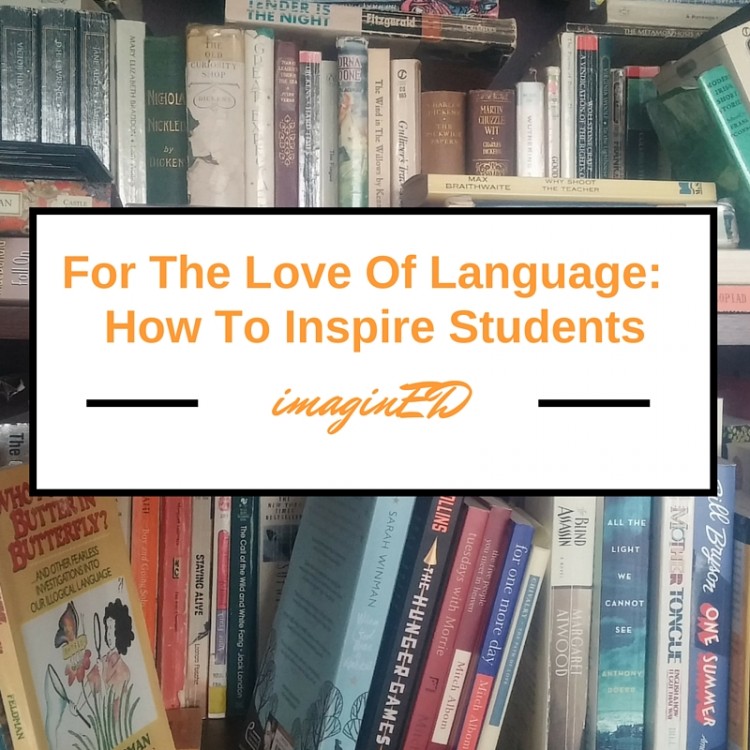This post is for all you imaginative English language and/or second language teachers out there…
But first! Halt! I learned a new word and it’s awesome.
S C R A U N C H E D
 Do you know this word? To scraunch means to make a crunching or crushing noise–like with shoes on gravel.
Do you know this word? To scraunch means to make a crunching or crushing noise–like with shoes on gravel.
Scraunched–the past tense of this marvellous verb–is said to be the longest one-syllable word in the English language*. (The other word of equally long length is “strengthen”).
That’s one clap. One stomp.
I admit it; when I read that scraunched is the longest 1-syllable word I did clap it.Which got me thinking about how clapping and stomping–rhythm of any kind–taps into the sense of musicality all human beings share. Rhyme, rhythm, & pattern are powerful tools for engaging emotion and imagination.
Quick Tip 4 Teaching Vocabulary: Engage Rhyme, Rhythm, & Pattern
Second language teachers listen up! You can tap into your students’ sense of musicality by clapping or stomping the syllables of new vocabulary words. When learning a new unit have students classify and clap the single, double, triple (or more) syllabic words. They can also pair the words to notice or create rhymes. Engage the body even more: what facial expression or pose could evoke the word or an association with the word to help students remember its meaning? This is not a waste of your precious instructional time.
You likely do this already, but you should always encourage your students to see the language as musical and beautiful. What words do they most enjoying hearing or saying? Which do they think look pleasing to the eye? What are their favourite words? Scraunched would be on my list of favourite words FOR SURE. In French? Pantouffles. Definitely pantouffles (slippers).
Your students’ engagement always begins with your own passion and connection with a topic. Find this and you will have more success in shaping engaging lessons and units. (Read this post about the importance of your engagement in teaching for creating meaningful and memorable lessons for your students. Or this post for a sense of how ignoring your emotional connection to topics can impact how successful you will be at engaging your students.)
(*Source: National institute for environmental health sciences kids’ page: http://kids.niehs.nih.gov/games/jokes/trivia.htm)
4 On-Line Resources for English Teachers
1. List of 20 Weird Facts About English Vocabulary: This site was created by Maizie Simpson (@maizie_simpson). She is clearly someone who loves the English language. The list of weird facts includes words Shakespeare created (e.g. eyeball) and such useful information as #13 which may be my personal favourite: “Never tell your significant other that they look “erinaceous” because it means they look like a hedgehog.” If you do in fact tell your loved one s/he looks erinaceious then you might snirtle (weird fact #20). Enjoy!
2. Every word has a history and tells a story. A BFF of the imaginative language teacher is an etymological dictionary; there are many available for use on line. Find the history of poetical devices, literary terms and more. For a really modern expression of the great language of English and a blog that offers fun words of the day (#wotd), idioms (#idioms) and “word fotos” check out YUNiversity. For a quirky analysis of roots of words within that blog click here.
3. Introduce different punctuation marks’ social personalities! What are you? Thanks for this great poem Carrie J Keplinger. Find it on my pinterest board (Gillian Judson; board name “Mix of Imaginative Activities”) or click here.
4. This would be my second shout out to Bill Bryson in the past week but I do believe his books should be required reading for imaginative educators. A must-read for English teachers is Bryson’s Mother Tongue: English And How It Got That Way (1990, Avon Books). Learn about the first sentence, the strange and fascinating emergence of words and dialects, different forms of word games and more.
Bye For Now
All of these tips connect to Imaginative Education, a way of teaching that centralizes the engagement of students’ emotions and imaginations in learning. Our Tools of Imagination Series will show you particular tools you can use to engage your students. Explore the CIRCE website for even more information about Imaginative Education. Subscribe today and get a weekly update of our posts (tips for teaching, resources, bad jokes etc.)

